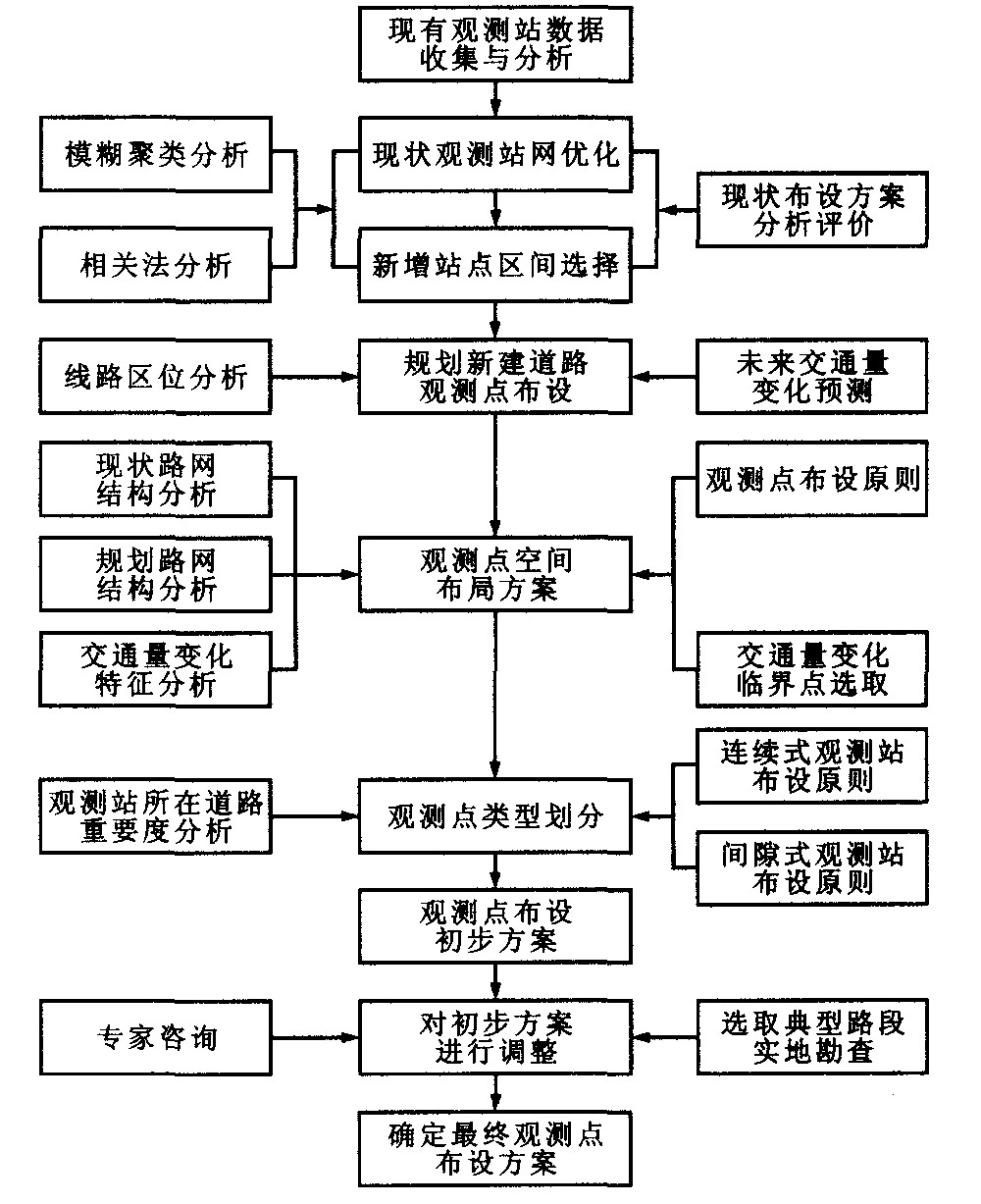-
摘要: 基于客观性、可靠性、实用性的原则, 应用模糊聚类分析与相关分析结合的方法对交通量观测站进行宏观布设。同时结合观测站布设应满足的规则及交通量变化临界点的选择方法, 以交通生成吸引点、交通枢纽等为依据, 确立了地区交通量观测站布设的总体思路和流程, 通过构建道路重要度指标确定观测站布设的类型。应用结果表明此方法实现了观测站布设的定量化、系统化和可操作性, 能够很好地筛选代表路段, 从而确定增减观测站的数量与位置, 且布设结果与道路系统的实际状况一致。Abstract: Based on the principles of objectivity, reliability and practicability, this paper set up traffic count stations using fuzzy clustering and correlation analysis. The whole idea and flow chart of stations layout were established considering the layout principles and choice rules of traffic volume changing critical point. According to the index of road important extent, the layout type of stations was decided. Then a quantitative and systematic method of macro layout to traffic stations was put forward. Applied results show that the method can select representative roads and determine count stations location and number, the layout result meets with the demands of the actual road state.
-
Key words:
- traffic planning /
- layout method /
- fuzzy clustering /
- correlation analysis /
- road important extent
-
表 1 判断矩阵
Table 1. Judgment matrix
国道 省道 过境道路 区间道路 国道 1 3 2 6 省道 1/3 1 1/3 3 过境道路 1/2 3 1 5 区间道路 1/6 1/3 1/5 1 表 2 道路重要度评价
Table 2. Evaluation of road important extent
观测道路编号 2002年道路平均交通量/ (veh·d-1) 交通流量评价值 国道 省道 过境道路 区间道路 道路地位与功能评价值 重要度评价值 G108 4 130 0.721 8 0.471 5 0.32 0.791 5 0.763 6 G210 998 0.078 6 0.471 5 0.32 0.791 5 0.506 4 G316 5 485 1.000 0 0.471 5 0.32 0.791 5 0.874 9 S211 5 066 0.914 0 0.146 2 0.062 2 0.208 4 0.490 6 S309 615 0.000 0 0.146 2 0.062 2 0.208 4 0.125 0 -
[1] 刘灿齐. 现代交通规划学[M]. 北京: 人民交通出版社, 2001. [2] 陈植华. 用于水资源系统观测网空间布局优化设计的技术方法[J]. 地质科技情报, 2000, 19 (12): 83—88. https://www.cnki.com.cn/Article/CJFDTOTAL-DZKQ200004016.htmCHEN Zhi-hua. Introduction of the approaches to design monitoring network of water resources system[J]. Geological Science and Technology Information, 2000, 19(12): 83—88. (in Chinese) https://www.cnki.com.cn/Article/CJFDTOTAL-DZKQ200004016.htm [3] 胡淑礼. 模糊数学及其应用[M]. 成都: 四川大学出版社, 1994. [4] 汪荣鑫. 数理统计[M]. 西安: 西安交通大学出版社, 1986. [5] 孙海浩, 林航飞. 地区公路网交通量观测点布设研究[J]. 华东公路, 2003, 26 (1): 74—77. https://www.cnki.com.cn/Article/CJFDTOTAL-GDGT200401016.htmSUN Hai-hao, LIN Hang-fei, Research on the layout of traffic volume observation station of regional highway networks[J]. East China Highway, 2003, 26 (1): 74—77. (in Chinese) https://www.cnki.com.cn/Article/CJFDTOTAL-GDGT200401016.htm [6] 杨棋. 用于OD反推的路段交通量观测点设置研究[J]. 中国公路学报, 1999, 12 (5): 81—87. https://www.cnki.com.cn/Article/CJFDTOTAL-ZGGL1999S1012.htmYANG Qi, Research on traffic counting locations for OD matrix estimation[J]. China Journal of Highway and Transport, 1999, 12(5): 81—87. (in Chinese) https://www.cnki.com.cn/Article/CJFDTOTAL-ZGGL1999S1012.htm [7] 余国才, 周伟. 公路网布局优化理论与方法[J]. 西安公路交通大学学报, 1998, 18 (3): 45—49. https://www.cnki.com.cn/Article/CJFDTOTAL-XAGL803.011.htmYU Guo-cai, ZHOU Wei. Theory and method of highway network layout optimization[J]. Journal of Xi'an Highway University, 1998, 18(3): 45—49. (in Chinese) https://www.cnki.com.cn/Article/CJFDTOTAL-XAGL803.011.htm [8] 邱冬. 多指标评价方法的系统分析[M]. 北京: 中国统计出版社, 1991. -





 下载:
下载:



